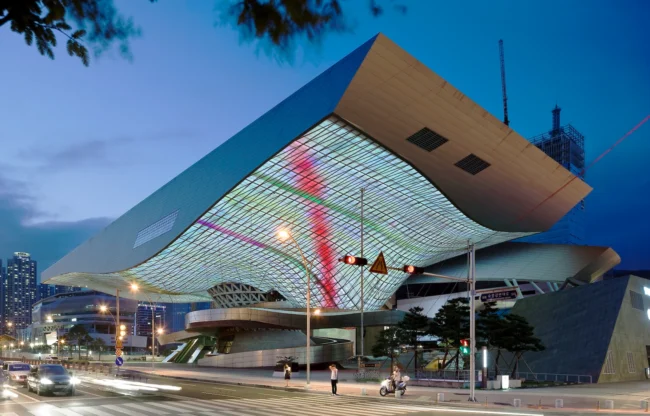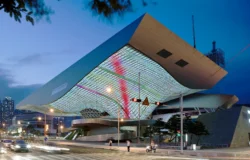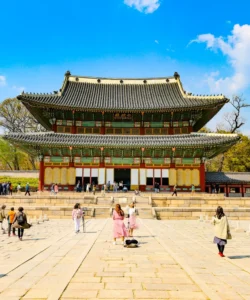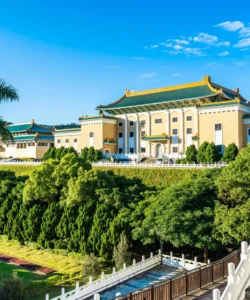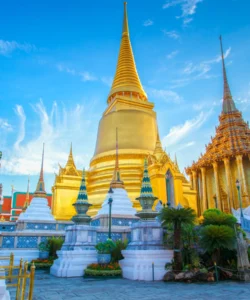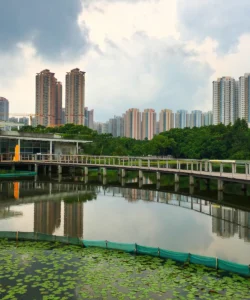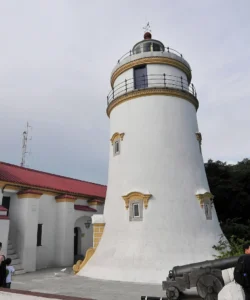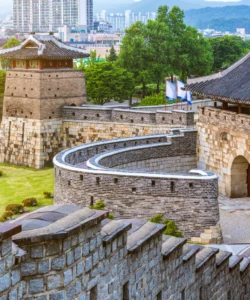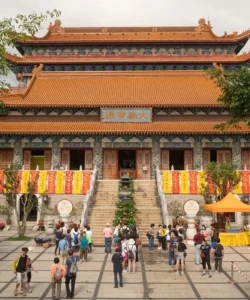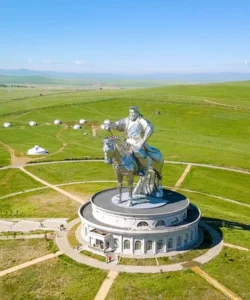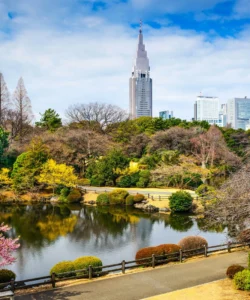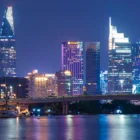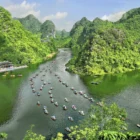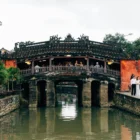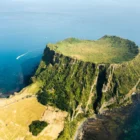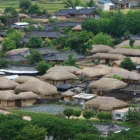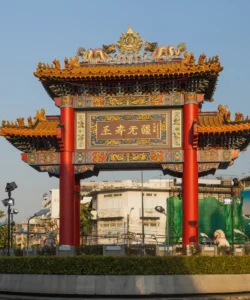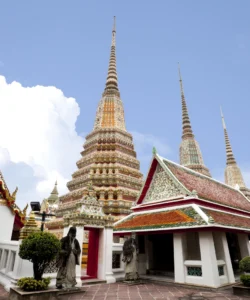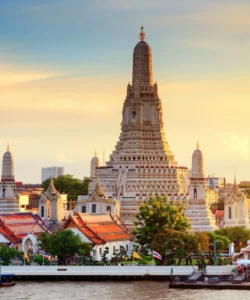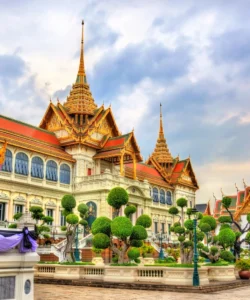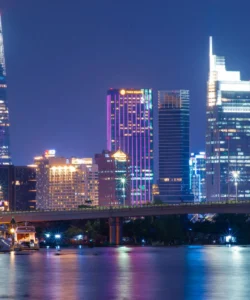The Busan Cinema Center (BCC) is a striking and avant-garde architectural masterpiece located in Busan, South Korea. It serves as the official venue for the prestigious Busan International Film Festival (BIFF), Asia’s largest film festival, and functions as a dynamic cultural complex year-round, hosting film screenings, performances, exhibitions, and various events. Its audacious design, particularly its record-breaking cantilevered roofs, has made it an internationally recognized landmark.
Name: Busan Cinema Center (영화의전당, Yeonghwaui Jeondang, literally “Hall of Films”)
Address: 120 Suyeonggangbyeon-daero, Haeundae-gu, Busan, South Korea. It is located in the Centum City area of Haeundae-gu, a modern and rapidly developing district.
How to get there:
The Busan Cinema Center is well-connected and easily accessible by public transport in Busan:
- By Subway: The most convenient way. Take Busan Subway Line 2 to Centum City Station (Exit 6 or 12). From there, it’s a short 5-minute walk directly to the Busan Cinema Center.
- By Bus: Numerous city bus routes serve the Centum City area, with stops very close to the Busan Cinema Center.
- By Taxi/Ride-Sharing Services: Taxis are readily available throughout Busan and can drop you off directly at the center.
Landscape and Architecture:
Designed by the Austrian architectural firm Coop Himmelb(l)au, the Busan Cinema Center is a work of deconstructivist architecture, characterized by its dramatic forms and innovative engineering:
- World’s Longest Cantilever Roofs: This is the BCC’s most iconic and famous architectural feature. It holds the Guinness World Record for the longest cantilever roof, stretching an astonishing 85 meters (279 feet) with a massive overall length of 120 meters (394 feet) – roughly 2.5 times the length of a soccer field. There are two such roofs, a “Big Roof” and a “Small Roof,” covering vast outdoor public spaces.
- LED Ceiling Illumination: The undersides of both the Big and Small roofs are covered with tens of thousands of LED lights (23,910 on the Big Roof and 18,690 on the Small Roof). These LEDs display dazzling, choreographed light shows, transforming the center into a mesmerizing visual spectacle at night.
- Dynamic and “Flying” Form: The overall design is dynamic and asymmetrical, with a “flying” or “floating” appearance created by the massive overhanging roofs supported by minimal, often angled, columns.
- Complex of Interconnected Buildings: The center is a blend of connected indoor and outdoor public spaces and contains various programmatic elements:
- Cine Mountain: A building housing multiple indoor cinemas (Cinema I, Cinema II, Cinematheque, Indieplus).
- BIFF Hill: Another structure containing office spaces, creative studios, and dining areas.
- Double Cone: An emblematic, sculptural element that pierces the roof.
- Outdoor Cinemas and Public Plazas: Underneath the cantilevered roofs are vast, column-free public plazas, including the BIFF Theater (Outdoor Cinema) which has nearly 4,000 seats, and the Red Carpet Area (Memorial Court). These spaces are flexible and used for various events, especially during BIFF.
- Materials: The primary materials used are concrete and steel for the structural elements, with glass panels and stone veneer for exterior finishes, creating a contemporary and robust aesthetic.
What makes it famous:
The Busan Cinema Center is famous for:
- Home of the Busan International Film Festival (BIFF): It is the main venue for BIFF, one of the most significant film festivals in Asia, making it a global hub for cinema.
- Guinness World Record for Longest Cantilever Roof: Its groundbreaking architectural design and the sheer engineering feat of its cantilevered roofs have garnered international recognition and a place in the Guinness Book of World Records.
- Dazzling Nighttime Light Shows: The spectacular LED illumination on the underside of its roofs turns the center into a dynamic, artistic canvas every night, captivating visitors with its ever-changing colors and patterns.
- Architectural Icon: Its bold, deconstructivist architecture has made it a symbol of modern Busan and a landmark of contemporary architectural innovation.
- Multifunctional Cultural Complex: Beyond the film festival, it serves as a year-round cultural space, hosting a variety of film screenings (including art-house and classic films), performances, exhibitions, and public events.
- Public Space Innovation: Its design emphasizes the creation of vibrant public spaces that blur the lines between indoor and outdoor, entertainment and everyday life.
Differences from some other wonders:
The Busan Cinema Center stands out from other wonders, particularly other entertainment venues or cultural centers, in several distinct ways:
- Record-Breaking Cantilever: Its Guinness World Record for the longest cantilever roof is a highly specific and undeniable architectural distinction. While other buildings may have large overhangs, the sheer scale and engineering audacity of the BCC’s cantilevers are unique.
- Integration of Light as Architecture: The extensive and integrated LED lighting system on the underside of its roofs is not merely decorative; it’s a fundamental part of the architecture, transforming the building itself into a dynamic visual medium. This goes beyond simple facade lighting on other buildings.
- Deconstructivist Style: Its architectural style, designed by Coop Himmelb(l)au, is a prominent example of deconstructivism, characterized by fragmentation, non-linearity, and a sense of controlled chaos. While other modern buildings might be avant-garde, the BCC’s clear adherence to this specific architectural philosophy (often with a “flying” or “exploding” aesthetic) sets it apart from more traditional or minimalist designs.
- Dual Function as Festival Hub and Public Space: It effectively functions as both a dedicated, high-capacity venue for a major international film festival (BIFF) and a continuous, vibrant public space for daily cultural activities. This seamless blend of high-profile event venue and accessible urban cultural center is a key feature.
- Architectural Innovation for Public Experience: The design is not just for aesthetic appeal; it creates unique public experiences, such as the grand, column-free outdoor spaces sheltered by the massive roofs, which are designed for large gatherings and dramatic events.
In essence, the Busan Cinema Center is a bold statement of architectural ambition and a dynamic cultural hub, a truly unique wonder that fuses cutting-edge design with the magic of cinema and the vibrant spirit of Busan.
